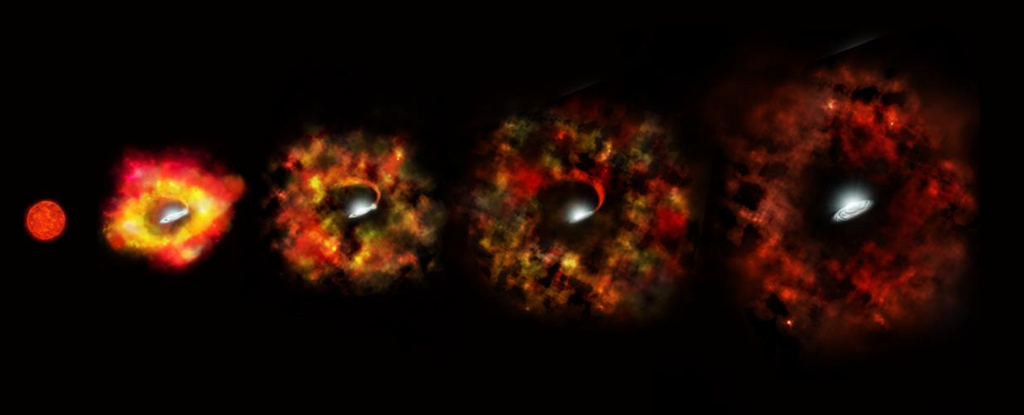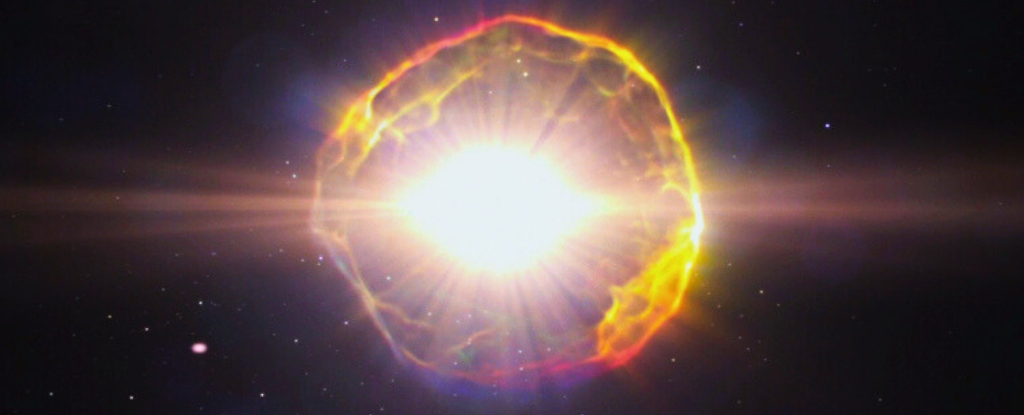In 2009 a giant star 25 times more massive than the Sun simply…vanished.
Okay, it wasn’t quite that simple. It underwent a period of brightening, increasing in luminosity to a million Suns, just as if it was ready to explode into a supernova.
But then it faded rather than exploding. And when astronomers tried to see the star, using the Large Binocular Telescope (LBT), Hubble, and the Spitzer space telescope, they couldn’t see anything.
The star, known as N6946-BH1, is now considered a failed supernova. The BH1 in its name is due to the fact that astronomers think the star collapsed to become a black hole rather than triggering a supernova. But that has been conjecture.
All we’ve known for sure is that it brightened for a time then grew too dim for our telescopes to observe. But that has changed, thanks to the James Webb Space Telescope (JWST).
The new study, published on the arXiv, analyzes data gathered by JWST’s NIRCam and MIRI instruments. It shows a bright infrared source that appears to be a remnant dust shell surrounding the position of the original star. This would be consistent with material ejected from the star as it brightened rapidly.
It could also be an infrared glow from material infalling into the black hole, though that seems less likely.
Surprisingly, the team also found not one remnant object, but three.
This makes the failed supernova model less likely. Earlier observations of N6946-BH1 were a blend of these three sources since the resolution wasn’t high enough to distinguish them.
So a more likely model is that the 2009 brightening was caused by a stellar merger. What appeared to be a bright massive star was a star system that brightened as two stars merged, then faded.
While the data leans toward the merger model, it can’t rule out the failed supernova model. And that makes our understanding of supernovae and stellar mass black holes more complicated.
We know from black hole mergers observed by LIGO and other gravitational wave observatories that stellar-mass black holes exist and are relatively common. So some massive stars do become black holes.
But whether they become supernovae first is still in question. Regular supernovae can have enough remnant mass to become a black hole, but it’s hard to imagine how the largest stellar black holes could have formed after supernovae.
N6946-BH1 is in a galaxy 22 million light-years away, so the fact that JWST can distinguish multiple sources is impressive. It also gives astronomers hope that similar stars will be observed in time.
With more data, we should be able to distinguish between stellar mergers and true failed supernovae, which will help us understand the last stages of stars as they move toward becoming stellar-mass black holes.
This article was originally published by Universe Today. Read the original article.





